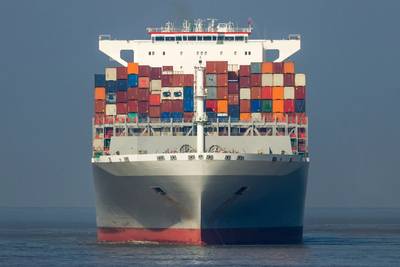Peak Season Promises Better Box Freight Rates -MSI
After a pattern of divergence at the start of the year, July saw a modest realignment between charter and freight markets as liner operators react to cost pressures and the wider industry awaits the impact of the potential trade war between the U.S. and China, according to the latest Container Shipping Forecaster from MSI.
Following an impressive run since the end of 2017, timecharter earnings have leveled off in recent weeks, a slowdown that began with smaller feeder vessels and has now spread to larger units. While the charter market slowdown is partly seasonal, the lower level of activity comes against a backdrop of service withdrawals which will impact larger units, according to Daniel Richards, Analyst at MSI.
“For feeder vessels, where there have not been notable service reductions, it is more likely that liners are holding back for other reasons: either to take some steam out of the market, or out of prudence given potential trade war effects on regional trade routes. We now see limited upside for charter earnings over peak season given moves by liner operators to restructure services and restrict capacity.”
Freight markets saw an improved performance over the past month, even if holding onto recent gains is proving difficult. Week 30 of 2017 proved the peak for mainlane spot freight rates, which then declined over peak season.
MSI expects 2018 will avoid this trend, and that Transpac rates over peak season will be around 10-15 percent above 2017 levels, and Asia-Europe around 5 percent. Improving freight rates, while a positive development, remain vulnerable to rising costs, Richards adds.
“With the exception of the Asia-North Europe headhaul, mainlane freight rates currently sit above their equivalent 2017 position. Higher volume growth and more aggressive capacity management are the obvious drivers to improved levels, but these gains will be largely eroded by growing bunker costs, however, and liners will struggle with profitability for the remainder of the year.”
In MSI's view, short-term mainlane growth will improve, but will not be able to reverse the impacts of weak growth so far this year. Early indications from U.S. ports and bills of lading processing suggest that June import volumes surged, perhaps suggesting 'panic-buying' as the trade war scenario worsened.
Richards adds that while the noise around the imposition of trade tariffs focuses on the mainlane trades, their potential impact will be felt more widely.
“It now seems unavoidable that the U.S. and China will levy tariffs on the large part and quite possibly all of their bilateral trade flows. The largest effects will be felt on the eastbound Transpacific, but the key area to watch is how far tariffs on U.S. imports risk disrupting complex cross-border supply-chains which feed into finished products and which are especially key to the high density of regional and feeder services in the intra-Asia market.”










